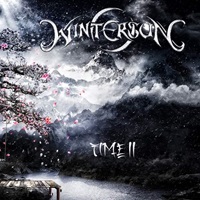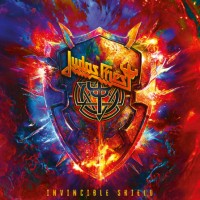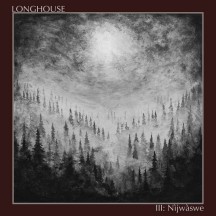Longhouse - III: Nìjwàswe review
| Band: | Longhouse |
| Album: | III: Nìjwàswe |
| Style: | Doom metal, Sludge metal |
| Release date: | August 2024 |
| A review by: | musclassia |
01. Mahìngan
02. Mishi Pijiw
03. Kije Sabe
04. Nìjwàswe
05. Amàzowin
The meteoric rise of Blackbraid has given Native American-made metal a visibility boost internationally, but they’re by no means the sole representative of North American indigenous peoples in metal, and others have their own stories to tell.
While Blackbraid’s Sgah’gahsowáh has brought renewed attention onto indigenous metal music, the history of Native involvement in the scene dates back several decades, to at least Chuck Billy joining Testament. Still, there’s not been extensive representation within the metal scene over the decades, and there are numerous stories and experiences yet to be used for lyrical inspiration. Ottawa’s Longhouse’s music to date has been inspired by vocalist/bassist Joshua Cayer’s Algonquin heritage, and their new record III: Nìjwàswe documents his journey of connecting with his heritage and learning traditional teachings.
As far as what the music these tales are set to sounds like, it’s not easily categorizable; III: Nìjwàswe broadly falls under the post-metal umbrella, but there are elements of sludge, doom and progressive metal that can be picked up on across the album’s runtime. There are some eerie moments in opening track “Mahìngan” that remind me slightly of Opeth’s Blackwater Park due to the lead guitar layers above gloomy chords, while the song overall is built on sludgy, at-times black-tinged riffs.
The vocals are more than tinged with black metal, and may cause some division in response to them; personally, I do find the raw rasps to be a bit headache-inducing, and I’m not sure how much of that to attribute to the vocal style itself or its compatibility with the music it’s accompanying. When paired with dry and at-times underwhelming writing on “Mahìngan”, I do find that this track doesn’t get the album off to the most auspicious start. However, “Mishi Pijiw” immediately improves my disposition towards the record with emotionally-charged instrumentation from the off, from the bleak-yet-urgent guitar tone to the effective melodic guitar leads.
III: Nìjwàswe isn’t an entirely polished album, and there are other moments in which I find my engagement with it waning, such during the use of an up-tempo riff used a couple of times in the title track that feels a bit disconnected from the rest of the song. However, once the first song is out the way, I find it gradually comes into its own. “Kije Sabe” strikes a good balance between trudging doom and more driving riffs, and again the lead guitar parts contribute positively with some solid melodic hooks. “Nìjwàswe” is the only song to breach the 10-minute mark, and features some of the record’s more extensive post-metal explorations, such as haunting clean guitar segments, and passages where the guitar riffs subside in favor of pushing lead guitar hooks and textures more towards the forefront of the mix.
Perhaps the highlight song for me, however, is closer “Amàzowin”, mainly for the unexpected sonic departure it takes after a brooding, heavy first couple of minutes. On an album that otherwise has only exhibiting tenderness in very fleeting moments, Longhouse transition into an extended passage of lush, emotional melodic music featuring delicate, resonant clean guitar tones; with the harsh vocals distinctly muted, it reminds me somewhat of Agalloch, and the specific melodies bear something of a resemblance to Lunatic Soul’s “Walking On A Flashlight Beam” (or at least kept bringing that song to mind). It’s such a difference to the material that’s come before it (and fits very well with the heavier metal when it ultimately re-enters the picture in the closing minutes), and admittedly has done a lot to inflate my overall opinion of III: Nìjwàswe.
I feel like there is still unrealized potential for Longhouse; I would personally prefer either a different vocal style or a more accomplished delivery of it, and the sheer quality of “Amàzowin” makes one wonder what the band could accomplish by venturing into similar sonic territory more frequently across the album. However, they do have potential for sure, with good riffs and intelligent lead guitar use across the album, and a good range of sounds on display.
Rating breakdown
| Performance: | 7 |
| Songwriting: | 7 |
| Originality: | 7 |
| Production: | 7 |
Comments
Comments: 1
Visited by: 38 users
| MetalManic |
Hits total: 658 | This month: 658





